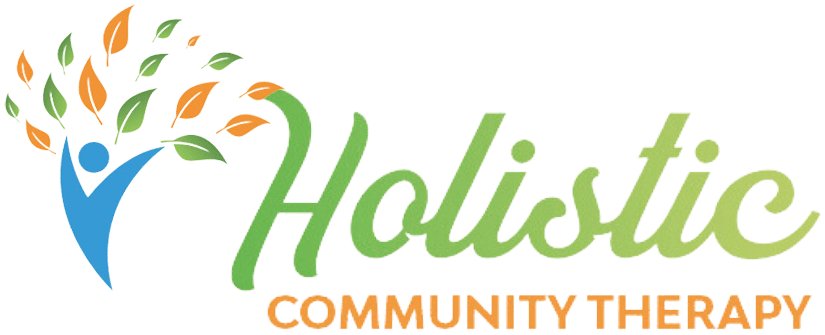Occupational therapy is a type of healthcare that’s all about helping people do the things that matter most to them, whether it’s getting dressed, working, caring for family, or simply enjoying daily routines.
At its core, occupational therapy empowers people facing illness, injury, or mental health challenges to participate in their chosen daily activities as independently and confidently as possible. OTs blend practical strategies and creative problem-solving, so you can overcome barriers to living well, at home, at work, and out in the world.
This practice isn’t just about fixing what’s broken. It’s about promoting health, building new skills, and adapting tasks or environments to fit each person’s needs. For those looking for a hands-on, action-focused approach, Holistic Community Therapy highlights how occupational therapy goes beyond talk therapy to create real-life, functional change.
Understanding the Occupational Therapy Approach
When you get into occupational therapy, you’ll quickly find that it’s not a one-size-fits-all deal. The OT approach centers on teaming up with each person to look at where they’re thriving and where things get stuck in daily life. OTs want to know about your strengths, routines, and what’s most meaningful to you, with an eye on your goals, your environment, and your community.
This therapy doesn’t just patch things up, it digs deep to understand how your mind, body, habits, and surroundings interact every day. The framework for this is often called the Person-Environment-Occupation (PEO) model, a well-established approach in occupational therapy that highlights how who you are, where you live, and what you do all work together (or sometimes, don’t) (Strong et al., 1999).
Evidence-based practice is the heart of this work. That means OTs don’t just lean on old habits or guesswork. They draw on clinical research, proven strategies, and personal experience to craft a therapy plan that fits your life. This science-backed, client-centered approach is what makes OT such a respected part of healthcare teams.
No two journeys look exactly the same. For some, progress might come from learning new ways to manage stress or energy. For others, it could be about adapting a kitchen, building a new morning routine, or figuring out social situations. At Holistic Community Therapy, you’ll find a clear, action-oriented process where the focus is on “doing,” not just talking. This hands-on support is practical and flexible, from your home to your neighborhood and even virtually, making therapy accessible and real.
Key Skills Every Occupational Therapist Brings
- Empathy: OTs listen without judgment and meet you where you are, creating a space where you feel understood and supported.
- Communication: They explain things in plain language, work side-by-side with clients, and team up with other professionals when needed.
- Problem-Solving: Creative thinking is a must. OTs invent solutions for unique life challenges, big or small.
- Cultural Humility: Respecting different backgrounds, beliefs, and lifestyles, OTs adapt strategies for each individual or family.
- Resourcefulness: Whether it’s teaching new skills or finding adaptive tools, OTs help you navigate barriers in ways that make sense for real life.
What Conditions Does Occupational Therapy Help?
Occupational therapy is made for the real world, so it covers a lot of ground. The truth is, people come to OT with every kind of story and challenge, physical, mental, emotional, or developmental. OTs are trained to work with folks recovering from physical injuries, those living with lifelong neurological conditions, or anyone trying to manage stress, anxiety, or daily overwhelm.
For adults, this can mean support after a stroke, learning to manage chronic pain, or adapting to new routines after an injury. OT also steps up for mental health concerns, such as depression, ADHD, or trauma. In fact, a systematic review published in the British Journal of Occupational Therapy found that OT interventions help children and adolescents in mental health settings build participation and independence. The focus is always on building skills for independence and well-being, no matter the diagnosis, or even if there’s no formal diagnosis at all.
The beauty of OT is in its holistic scope. It’s not just about working on one thing in isolation. OTs look at your life as a whole: how you move, think, interact, and live day-to-day. If you want a taste of how this approach helps people with ADHD, anxiety, or depression, check out the hands-on, practical strategies found at Holistic Community Therapy’s ADHD page, or explore their real-world support for anxiety and depression.
For anyone wondering if OT can help with their particular struggle, even those dealing with the ripple effects of trauma, sensory overload, or executive dysfunction, chances are, there’s something here for you. And because OTs work across the lifespan, they’re just as ready to help someone relearn everyday skills after surgery as they are to support a person trying to carve out mental wellness in stressful times. The aim is always fuller participation in life, in whatever form that takes for you.

Occupational Therapy Activities for Daily Life
- Mastering Self-Care Routines: OTs help you break down daily basics, like getting dressed, bathing, or brushing teeth, into steps that feel doable. This might mean practicing a morning routine together or finding the right tools for more independence.
- Building Organization and Executive Function: Many people struggle to stay on top of bills, work projects, or meal planning. OT sessions may focus on creating calendars, breaking down tasks, or using reminders so your days run smoother. If life feels overwhelming, personalized strategies from Holistic Community Therapy can turn chaos into calm with real-time skill building.
- Household Chores and Meal Prep: Everyday jobs like laundry, cooking, or grocery shopping can feel daunting after illness or when living with a chronic condition. A review of occupational therapy interventions found that OTs play a key role in supporting adults with self-care, productivity, and leisure, helping make daily routines safer and more manageable. OTs work with you to adapt tasks, use helpful gadgets, or develop step-by-step checklists.
- Community Participation: Maybe getting to the bus stop, shopping at the store, or attending social gatherings is a struggle. OTs come alongside you to practice these real-world skills, problem-solve barriers, and boost your confidence in daily outings. See how action-oriented therapy can help with mastering daily routines both at home and out in the world.
- Building Social and Coping Skills: Some OT activities focus on connecting with others, building communication, or handling stressful situations. If burn-out or executive dysfunction are holding you back, real-life support is available to help you build connections and routines that stick.
All of these activities are tailored to your needs, not just pulled from a textbook. OTs collaborate with you in the environments where you live and work, so you can build new habits and regain your sense of agency day by day.
Where Can You Find Occupational Therapy Services?
Occupational therapy can meet you just about anywhere, wherever daily life happens. You’ll find OTs working in outpatient clinics, hospitals, mental health centers, and rehabilitation units. Many OTs also serve people in nursing homes, assisted living facilities, schools, and community centers.
But these days, you aren’t always limited to “in-office” care. Home-based OT is growing, bringing services right to your living room or neighborhood. This can make things more comfortable, real, and relevant to your day-to-day challenges. In Oregon, for example, mental health occupational therapy is also available statewide via telehealth, bridging gaps in access and making therapy fit your life, not the other way around.
Virtual OT and community-based support mean it’s easy to get practical help even if transportation, health, or time are barriers. If you’re in Portland, Holistic Community Therapy offers action-focused occupational therapy with flexible appointment options. No need to face a waiting room or take on a mountain of paperwork to start.
Getting started usually involves a healthcare referral, but some clinics accept self-referrals or work directly with your insurance to verify coverage. Professional directories or your local occupational therapy association can point you toward licensed OTs in your area. Whatever your needs or background, there’s a path to therapy that’s accessible, affirming, and in tune with your real-world challenges.
How Occupational Therapy Benefits Daily Life
- Greater Independence: OTs help you build practical skills, so managing self-care, routines, and work feels doable, even if life’s thrown you a curveball.
- Healthier Routines: Therapy supports you in creating habits and structures that boost energy, balance, and confidence day-to-day.
- Improved Mental Wellness: OTs teach real-time strategies to manage stress, sensory overload, anxiety, and emotional overwhelm. For trauma survivors and neurodivergent folks, this can be life-changing.
- Renewed Social Connection: OT can help you overcome isolation, rebuild relationships, and find a sense of belonging. Building social confidence is a big part of the journey.
- Real-Life Progress: Occupational therapy bridges the gap between what you want to do and what you can do, making real, tangible change possible, no matter your starting point.
Taking the Next Step Toward Support
Life isn’t meant to be navigated alone, and you don’t have to figure out every challenge by yourself. Occupational therapy offers practical, compassionate support to help you create routines, build confidence, and move toward the life you want.
If you’re curious about how this kind of care could fit into your daily life, Holistic Community Therapy is here to walk alongside you. Together, we’ll focus on real solutions that honor who you are and where you want to go.
References
- Strong, S., Rigby, P., Stewart, D., Law, M., Letts, L., & Cooper, B. (1999). Application of the Person–Environment–Occupation model: A practical tool. Canadian Journal of Occupational Therapy, 66(3), 122–133.
- Brooks, R., & Bannigan, K. (2021). Occupational therapy interventions in child and adolescent mental health to increase participation: A mixed methods systematic review. British Journal of Occupational Therapy, 84(8), 458–472.
- McColl, M. A., & Law, M. (2013). Interventions affecting self-care, productivity, and leisure among adults: A scoping review. OTJR: Occupation, Participation and Health, 33(2), 110–119.






